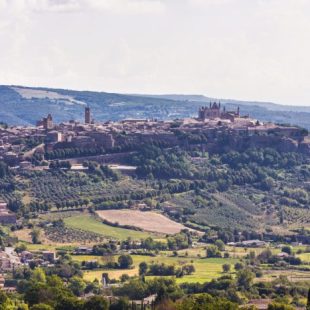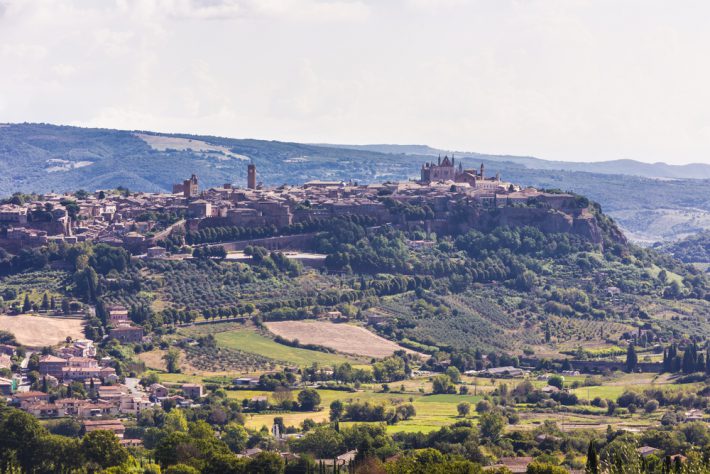
Why Umbria’s town of Orvieto is worthy of a visit
How to describe Umbria’s hill top town of Orvieto? Let’s just say it is very impressive, sitting majestically high and looking down on the Umbrian plains. The medieval upper town is virtually free of any traffic, perfectly preserved in its historical lineage.

Orvieto’s Cathedral is stunningly colourful. The façade has to be one of the most interesting seen anywhere, it is a Gothic collection of mosaics sculpture and wonderful stain glass, in all 300 years in the making. The nave feels spacious and is an optical illusion; wider towards the back and narrow near the altar, so it looks longer than it really is. The frescoes are by Signorelli who just happened to be Michelangelo’s inspiration. As well as the Cathedral, the town’s monuments and museums cover millenniums of history.
Orvieto sits on top of a huge underground system of Etruscan caves and wells. One of the wells is 175 feet deep and 45 feet wide and you can walk down into it. Orvieto was a popular hiding place for Popes during troubled times in Rome and this deep well was excavated for use in the event of a siege.
Orvieto is also famous for its classico wine. The volcanic soil is immensely rich in minerals, thus grape vines really prosper here, and bottles are often still kept in the same Tufo stone cellars that were used way back in Etruscan times.
The town is normally quiet after dark, tourism does not impose itself on the city despite it being popular, the streets still feel steeped in time, and it is a real pleasure to wander around in the evenings under the street lamps, before finding a good restraint or bar.
Orvieto’s convenient position on the main railway line and the autostrade links between Rome and Florence makes it easy to put on the visiting list.


